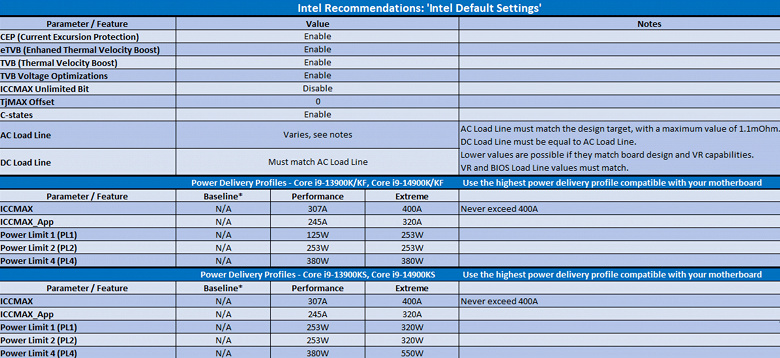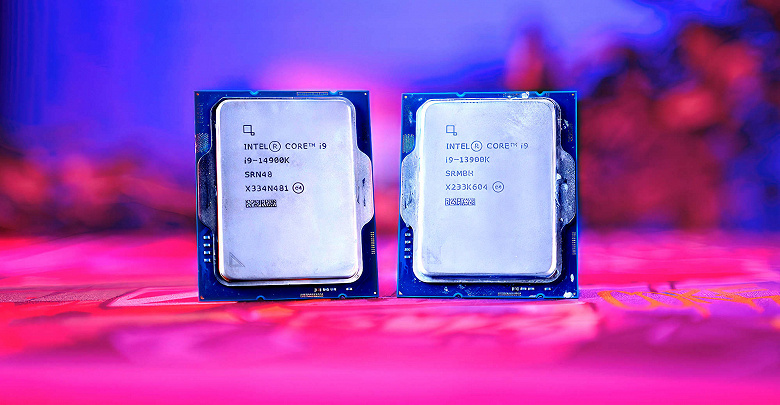Apparently, it won’t be possible to fix something without losing performance
Intel has issued a statement to consumers regarding the situation with its top-end Core i9 processors and their unstable operation.
In its statement, Intel did not say a word about the reasons for this situation, but again accused the motherboard manufacturers, albeit of a new offense.
Several motherboard manufacturers have released BIOS profiles called Intel Baseline Profile. However, these BIOS profiles do not match the recommended Intel Default Settings that Intel recently shared with its partners in response to instability issues reported with 13th and 14th generation Core processors.
These BIOS Intel Baseline Profile settings appear to be based on power delivery guides previously provided by Intel to manufacturers, describing different power delivery options for 13th and 14th generation Core K processors depending on motherboard capabilities.  ;
Intel does not recommend that motherboard manufacturers use these power delivery settings on boards capable of operating at higher values.
The recommended Intel Baseline Profile settings are a combination of thermal management and power delivery features, as well as a selection of possible power delivery profiles depending on the motherboard's capabilities.
Intel recommends that customers implement a maximum power profile compatible with each individual motherboard design, as listed in the table below

As you can see, the Intel Baseline Profile, which many motherboard manufacturers have already implemented in their products, turns out to be also incorrect, and the correct one — new one called Intel Default Settings. Let's remember that the other day we learned that Intel asked partners to implement it as default settings from May 31, thus admitting defeat in the fight against the problem. At the same time, it is unclear why Intel, already knowing about the problem, did not explain to motherboard manufacturers what and how to do, again leaving everything to chance. Whether Intel in general is going to say anything about the root causes of this situation is also unclear.
In any case, as soon as the Intel Default Settings profile appears in the BIOS as the default setting, all new buyers of the top-end Core i9 will receive much less powerful processors than they could have.

